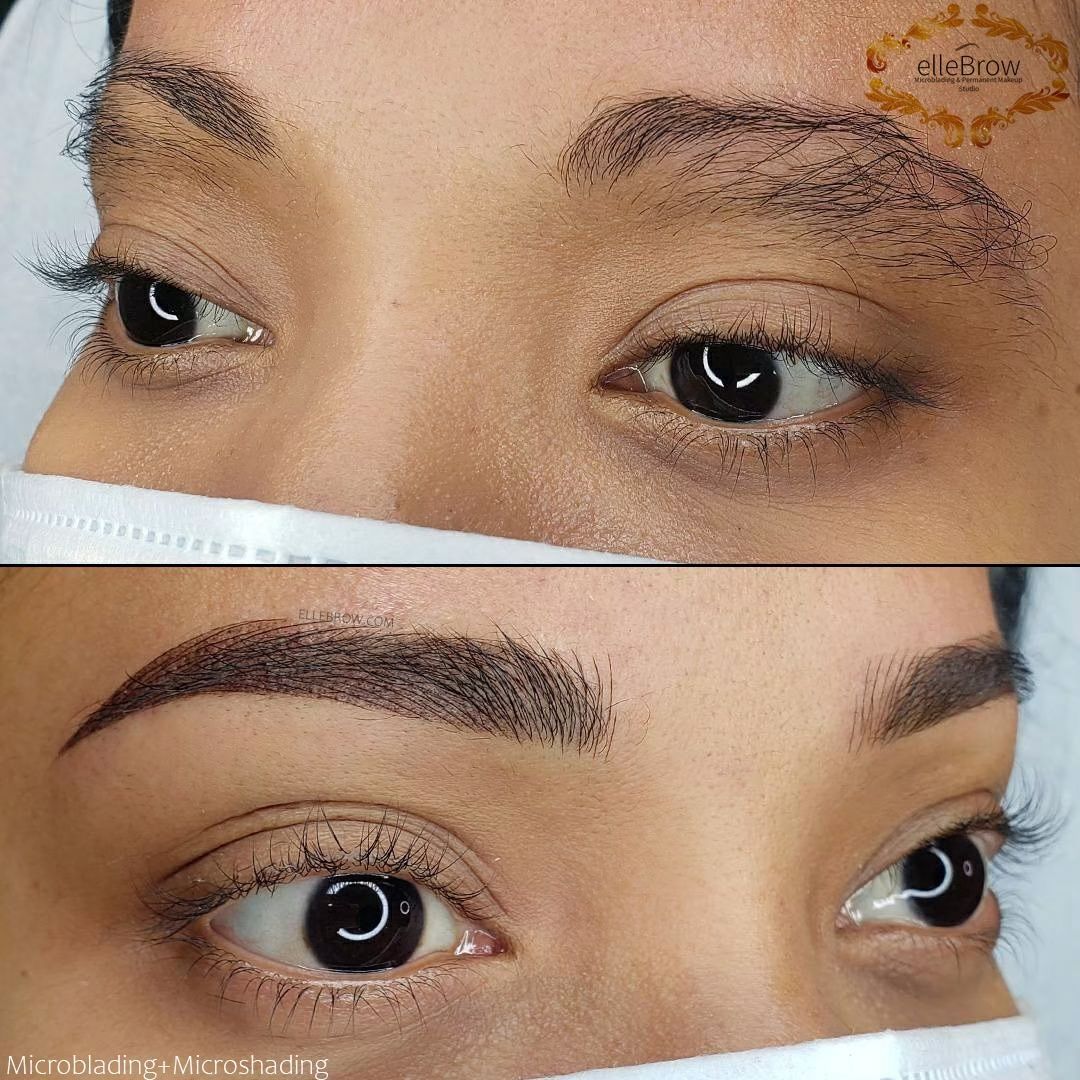Microblading for Dark Skin Tones and a Comparison to Microshading
Examination of Eyebrow Enhancement Techniques for Higher Fitzpatrick Scale Skin Tones
Introduction:
Darker skin, characterized by its inherent depth and glow, presents unique considerations in the field of cosmetic procedures. In
eyebrow enhancement, two techniques are primarily employed:
Microblading or
Nano Brows and
Microshading. While both techniques offer advantages, they may not be equally effective on all skin types, particularly those darker on the Fitzpatrick scale. The richness of darker skin tones necessitates a tailored approach to eyebrow enhancement to ensure the best possible results. This article aims to delve into these two procedures, analyzing their impact on darker skin tones and how to choose between them for the most natural, long-lasting results.
Microblading vs. Microshading: An Overview
Microblading and Nano Brows are permanent makeup techniques where a handheld tool (or machine in the case of nano brows) is utilized to create simulated hairlines in the skin, into which pigment is deposited. This results in an appearance of naturally full eyebrows.
Microshading, also termed powder brows, employs a stippling technique to create the illusion of makeup or a filled-in brow look. This procedure results in softly defined brows, mimicking the effect of eyebrow powder.
Suitability of Techniques for Darker Skin Tones
Although both techniques provide distinct benefits, microshading is often recommended over microblading for individuals with darker skin tones, specifically those who fall at or near a six on the Fitzpatrick scale.
Darker skin pigmentation may render the fine lines created by microblading less visible, reducing the effectiveness of the technique. Additional considerations include skin oiliness and pigment retention, which can impact the durability and clarity of microbladed eyebrows.
Darker skin tones also exhibit a different healing process, which can be more complicated than in lighter skin tones. Risks include hyperpigmentation, hypopigmentation, and keloid scarring, which are characterized by raised areas of skin where the microblading was performed.
Considerations for Melanin-Rich Skin
Melanin-rich skin, due to its typically higher sebum production, presents unique considerations for eyebrow enhancement techniques. This increased oil production, while contributing to the skin's natural glow and suppleness, can influence the effectiveness of microblading.
There are two main challenges associated with oily skin in relation to microblading:
- Pigment Retention: Increased sebum production may negatively impact the retention of the pigment used in microblading. The natural oils can cause the pigment to be pushed out of the small incisions, resulting in the premature fading of the procedure's effects.
- Blurred Strokes: Larger pores often accompany oily skin. The combination of larger pores and excess oil can cause the delicate strokes created by microblading to blur or spread, leading to an unintended shading effect over time.
Microshading as a Preferred Technique for Darker Skin Tones
Due to these considerations, microshading is often a superior choice for individuals with darker skin tones. This technique generally poses a lower risk of scarring, does not penetrate the skin as deeply as microblading, and results in an eyebrow appearance that is more pronounced on darker skin.
Individuals with skin tones nearing a six on the Fitzpatrick scale may find microshading to be a more effective eyebrow enhancement technique. This method can deliver natural-looking eyebrows that enhance the individual's inherent beauty.
In conclusion, it is essential to understand the unique characteristics of melanin-rich skin in order to make informed decisions regarding eyebrow enhancement techniques. Whether one chooses Microblading / Nano Brows or Microshading, it is imperative to consider the skin's oiliness, the likelihood of pigment retention, and the risk of scarring.
If you are in the New York City area, check out our Microblading NYC, Nano Brows NYC and Microshading NYC pages.
Questions?


